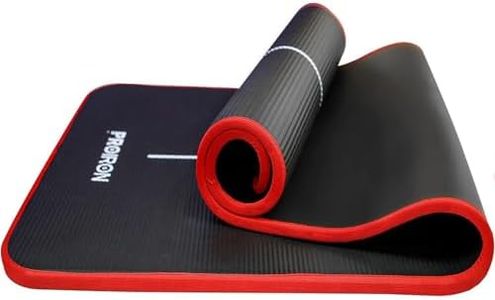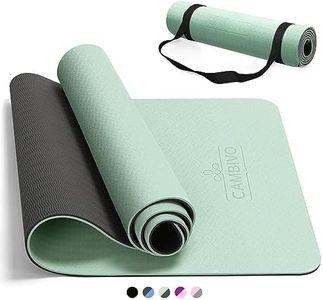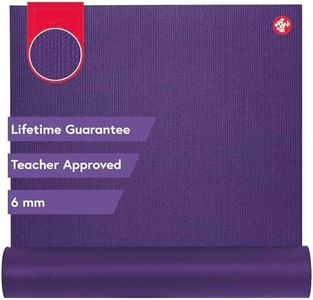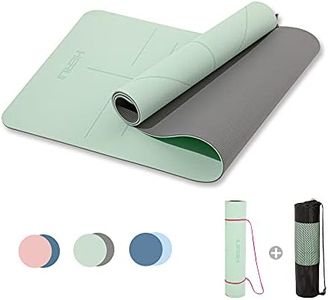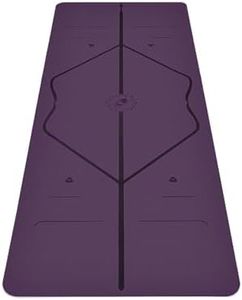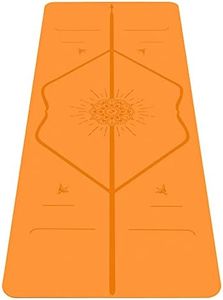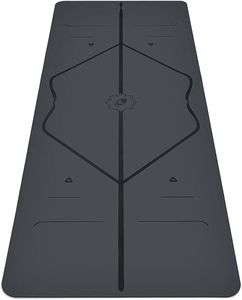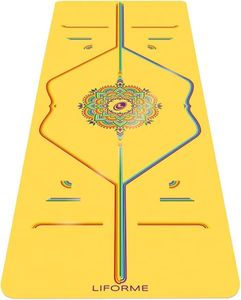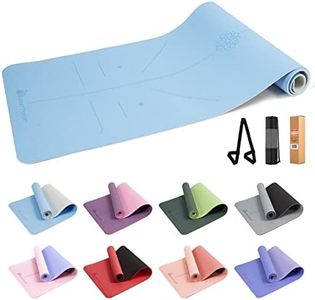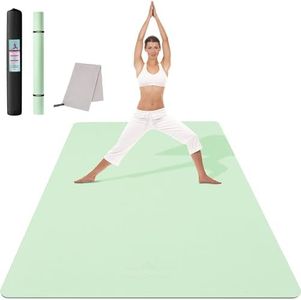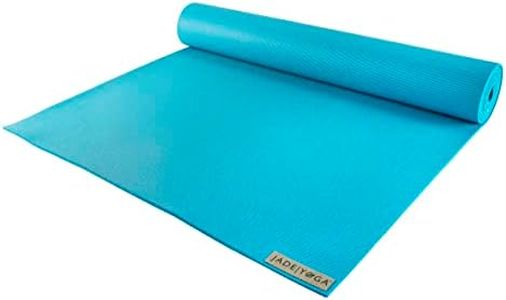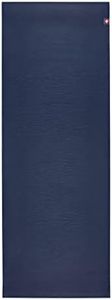We Use CookiesWe use cookies to enhance the security, performance,
functionality and for analytical and promotional activities. By continuing to browse this site you
are agreeing to our privacy policy
10 Best Yoga Mats For Beginners
From leading brands and best sellers available on the web.Buying Guide for the Best Yoga Mats For Beginners
Choosing a yoga mat as a beginner can feel overwhelming given the many options available. A yoga mat is your primary tool to provide comfort, support, and safety during your practice, so picking the right one can make your yoga sessions much more enjoyable and effective. As a beginner, it’s helpful to focus on core features that influence how the mat feels, grips, and supports you, especially while building up strength and flexibility. Understanding these features will help you filter through choices and find a mat that matches your body, practice style, and preferences. Remember, the best yoga mat for you will fit both your physical needs and the kind of yoga you plan on doing most frequently.ThicknessThickness refers to how cushioned the mat is, measured primarily in millimeters or inches. Thicker mats (around 6mm or more) offer more padding, making them a good choice if you have sensitive joints or want extra comfort for floor poses. Mats in the standard range, about 4-5mm, strike a balance between cushioning and stability, making them suitable for most beginners. Thinner mats (1-3mm) are lighter and give a grounded feel but may not provide enough support during longer sessions or for those who need more padding. Consider a thicker mat if you need more comfort, but if you value feeling stable and have fewer joint concerns, a standard thickness should suit you.
MaterialThe material of the yoga mat affects its durability, stickiness, and environmental friendliness. Common materials include PVC, TPE, rubber, and cork. PVC is durable and provides reliable grip but isn’t eco-friendly. TPE and natural rubber are more sustainable, still offering good cushioning and grip, but may have a shorter lifespan. Cork and cotton are eco-friendly and naturally antimicrobial but tend to feel firmer and may offer less stickiness. If you care about the environment or have allergies, look for mats made from natural materials. If grip and longevity are more important, synthetic materials might be a better fit.
Grip/TextureGrip, also called stickiness or texture, determines how well your hands and feet stay in place during poses. Mats with a sticky or rough texture help prevent slipping, which is crucial when learning and becoming used to holding different positions. Smooth mats may feel nice but can be slippery, especially if you get sweaty. If you tend to sweat or want more confidence in your footing, a mat with a noticeable texture or better grip will encourage stability and safety.
SizeMost yoga mats are around 68 inches long and 24 inches wide, which fits most people. However, if you’re taller or prefer more space for movement, there are longer and wider options available. Choosing the right size means you can fully stretch out during poses without your hands or feet hanging off the mat. Consider your body size and any additional movements you might make during your practice. If in doubt, go for a slightly bigger mat.
Weight & PortabilityThe weight of a yoga mat affects how easy it is to carry, especially if you’ll be traveling to yoga classes. Heavier mats tend to offer more cushioning, but lightweight designs are much easier to transport. Some mats even come with straps or carrying cases. If you practice at home, weight isn’t much of a concern, but if you'll be moving your mat frequently, a lighter option will keep things convenient.
Ease of CleaningYoga mats can absorb sweat and oils, so it’s important that they’re easy to clean. Some materials naturally resist odor and bacteria or can be wiped down easily, while others can even go in the washing machine. If you value a hygienic practice, choose a mat with a surface that can be cleaned quickly and thoroughly, especially if you practice regularly or sweat a lot.
